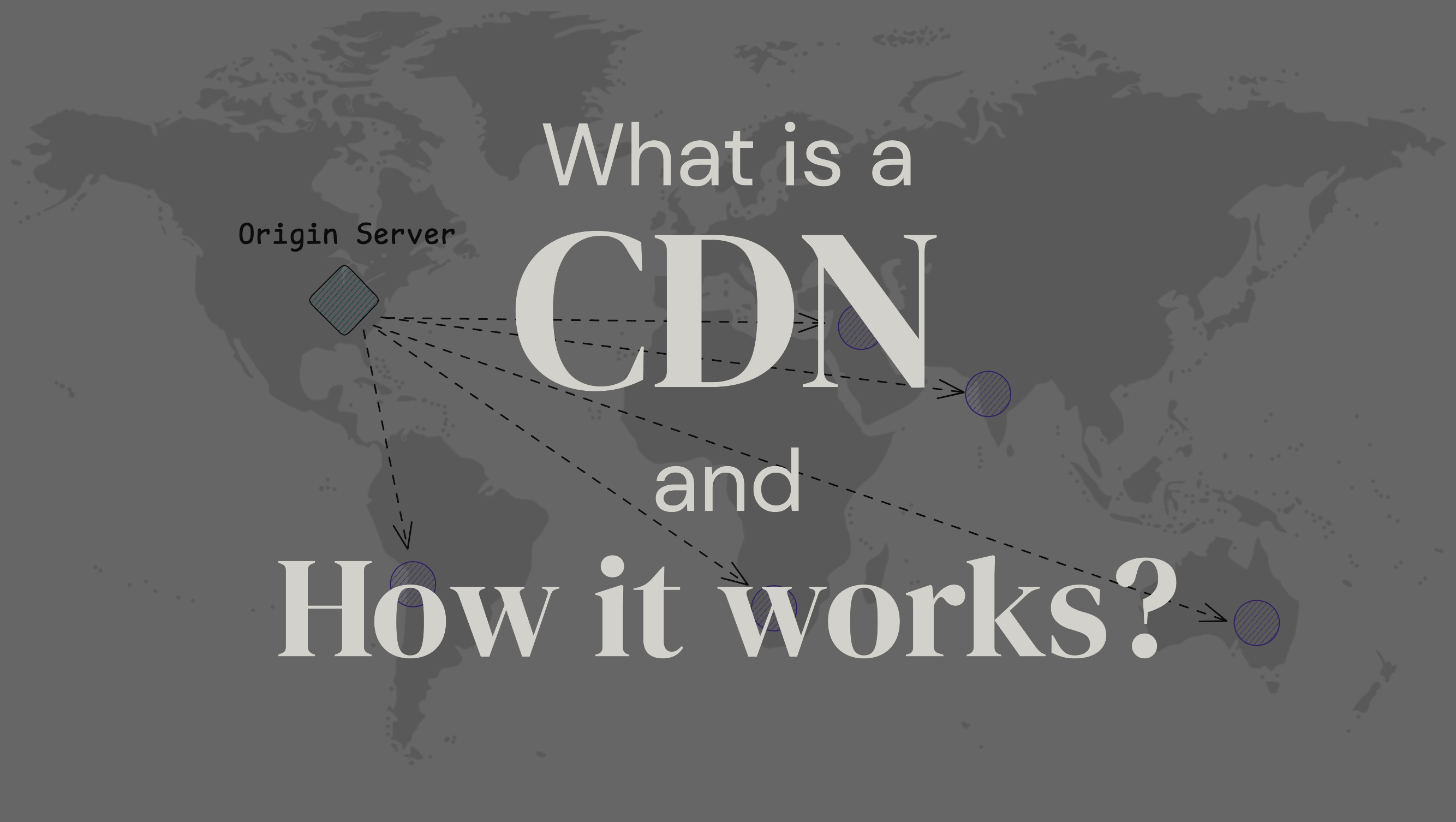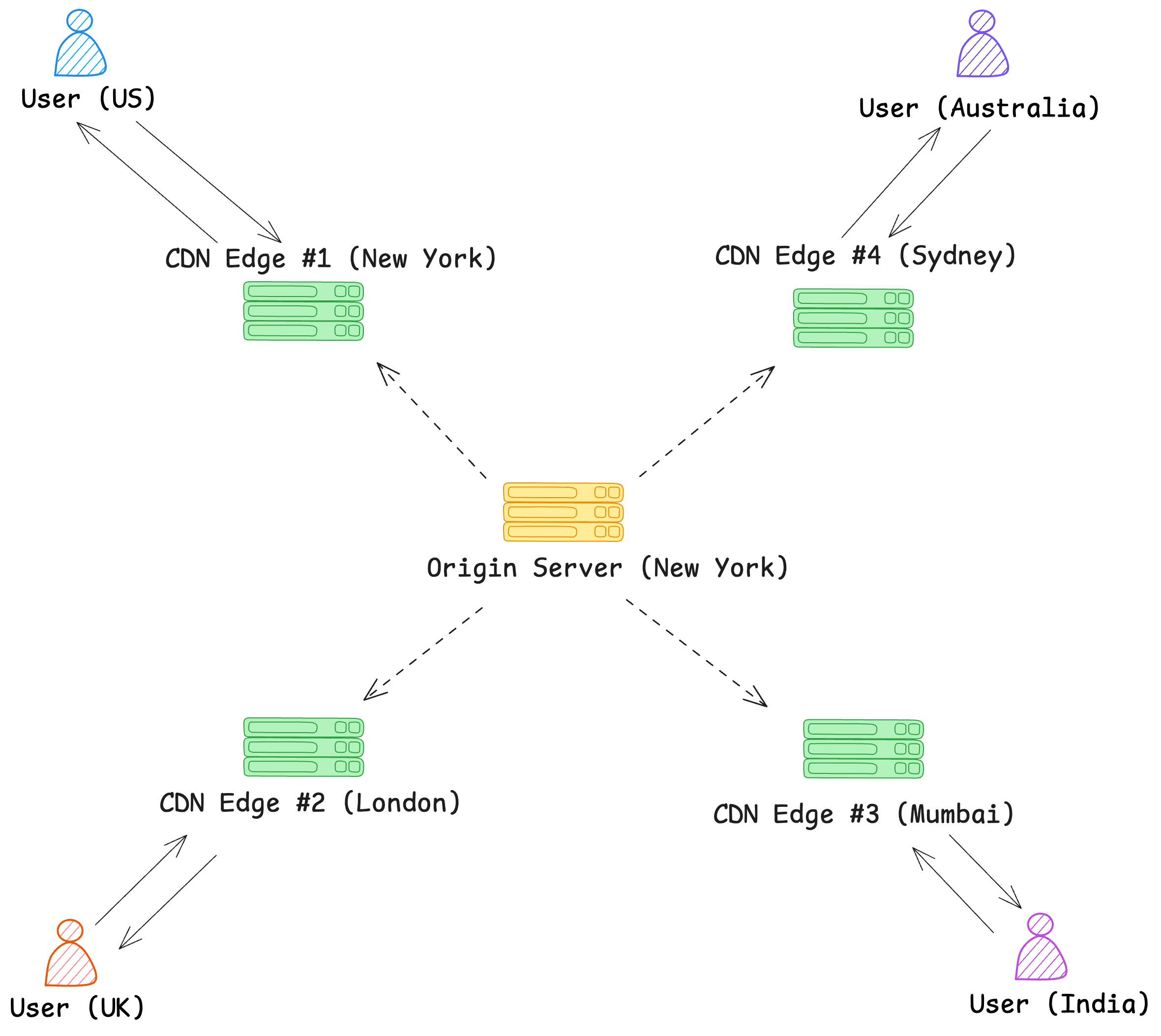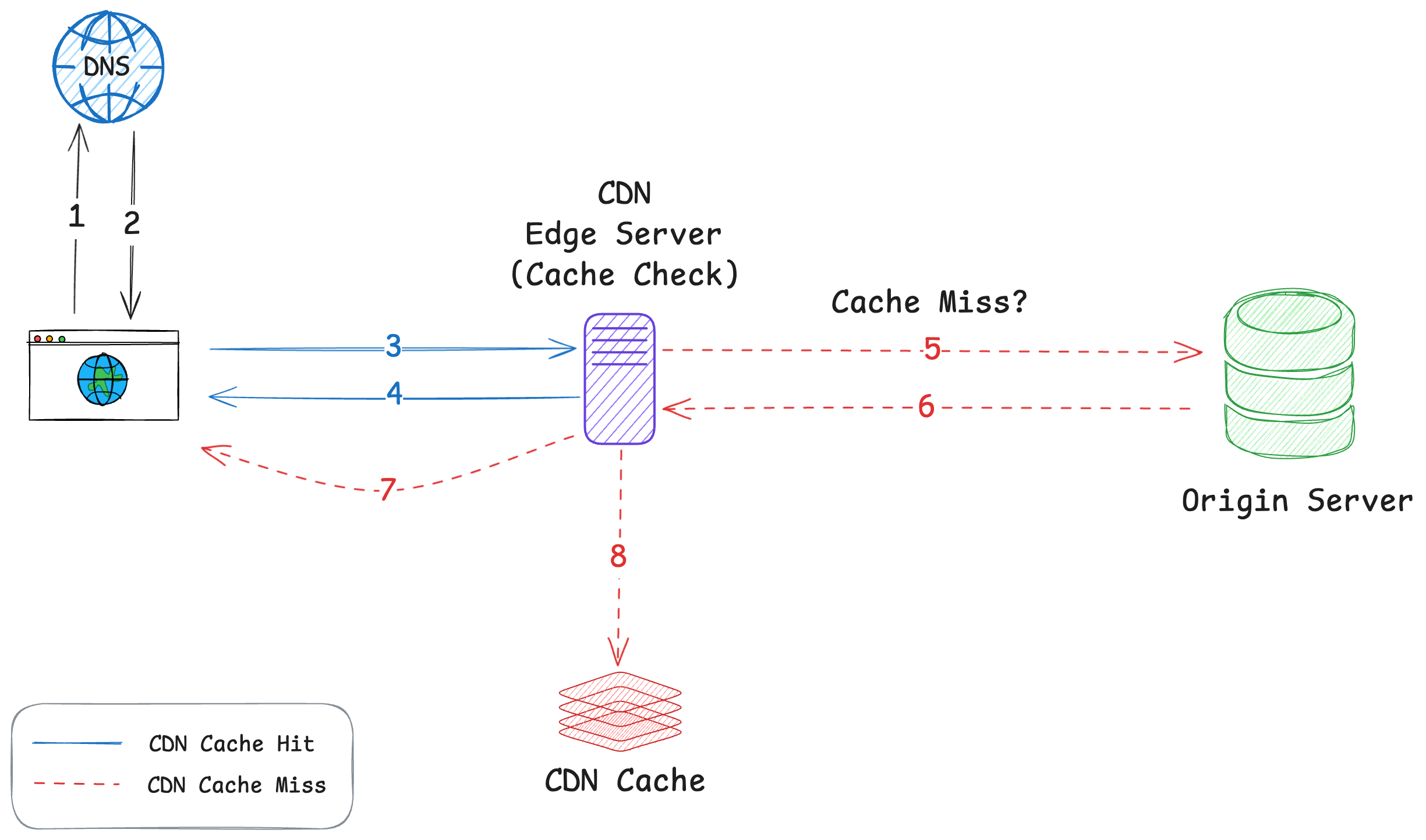What Is a CDN and How Does It Improve Website Speed?
 Chinu Anand
Chinu Anand
A Content Delivering Network (CDN) is a globally distributed network of edge servers that cache and serve content closer to user’s location. Instead of fetching data from a single origin server, CDNs store copies of static and dynamic content on multiple geographically distributed edge servers.
When a user requests content like webpage, image or video, the CDN delivers it from the nearest edge server reducing latency and loading time.

Imagine a website hosted in New York with visitors from India, Europe and Australia. Instead of every user requesting content from New York, a CDN caches the content on local servers in Mumbai, London and Sydney. This results in faster loads and reduced stress on the origin server.
Some of the top CDN providers are Cloudflare, Akamai, AWS CloudFront, Fastly.
How does CDN works?
CDNs work by caching and distributing content across multiple edge locations. Here’s a step-by-step breakdown of the CDN workflow:

A user visits
www.example.comand requests an image, video, or webpage.The DNS directs the request to the closest CDN server instead of the origin server.
The CDN server checks if the content is cached.
If the content is available (Cache Hit) on the edge server, it is delivered instantly.
If the content is not available (Cache Miss), it sends the request to the origin server.
The origin server then sends the requested data to the CDN.
The CDN serves the request to the user.
At the same time, it also stores the data in its cache for future requests.
Benefits of Using a CDN
Reduced Latency: Delivers content form the closest edge server.
Faster Page Load: Cached content reduces load time.
Bandwidth Savings: Reduces traffic to the origin server, lowering hosting costs.
DDoS Protection: Acts as a shield against malicious traffic.
Improved Availability: Distributed load across multiple servers, preventing downtime.
Key CDN Features
Edge Caching: cache static content (images, CSS, JavaScript, videos) on edge servers to serve it quickly without fetching from the origin server every time.
Dynamic Content Acceleration: optimize and cache dynamic content like API responses, HTML pages for better performance.
Load Balancing: distribute taffic accross multiple servers to avoid overload and ensure high availability.
Compression & Optimization: use Gzip, Brotli, and WebP to reduce file sizes and speed up delivery.
Security & DDoS Protection: act as a buffer between users and the origin server, preventing DDoS attacks, SQL injections, and bot traffic.
CDN Caching Strategies
Time-To-Live (TTL): Set an expiration time for cached content.
Cache Invalidation: Manually remove outdated content from the cache.
Stale-While-Revalidate: Serve stale content while fetching updated content in the background.
Edge Computing: Run code at the edge for dynamic content processing.
When to Use a CDN?
E-commerce Websites (Amazon, Flipkart) → Handle millions of daily visitors with faster product page loads.
Streaming Platforms (YouTube, Netflix) → Deliver high-resolution videos without buffering.
New Websites (BBC, CNN) → Serve breaking news to global users in real-time.
Online Games (PUBG, Fortnite, Call of Duty) → Reduce lag and latency for players worldwide.
SaaS & API Services (Google, Chatgpt) → Accelerate API response for gloabl clients.
Subscribe to my newsletter
Read articles from Chinu Anand directly inside your inbox. Subscribe to the newsletter, and don't miss out.
Written by

Chinu Anand
Chinu Anand
OpenSource crusader, Full Stack Web Developer by day, DevOps enthusiast by night. Saving the world one commit at a time.